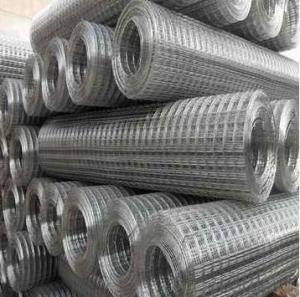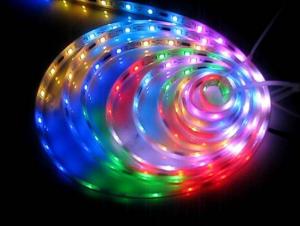1/4 Aluminum Plate
1/4 Aluminum Plate Related Searches
Led Light Bulbs For Ceiling Fixtures Led Lamps For Ceiling 42 In Ceiling Fan With Light Aluminum Coil Stock For Gutters Aluminum Foil For The Grill Hole Saw For Aluminum Plate Aluminum Tread Plate For Trailer Bow Plate For Aluminum Boat Aluminum Foil For Grow Room Aluminum Foil For Joint PainHot Searches
Stock Price For Aluminum Aluminum Coil Stock For Sale Aluminum Gutter Coil For Sale Used Aluminum Scaffolding For Sale 1/4 Aluminum Plate For Sale Aluminum Bar Stock For Sale Aluminum Round Stock For Sale Aluminum Diamond Plate For Sale Aluminum Scaffolding For Sale Craigslist 6061 Aluminum Plate For Sale Aluminum Dock Plate For Sale 7075 Aluminum Plate For Sale Aluminum Tread Plate For Sale Aluminum Checker Plate For Sale Aluminum Plate For Sale Near Me Plate Aluminum For Sale Aluminum Plate For Sale Aluminum Square Stock For Sale Aluminum Flat Stock For Sale Billet Aluminum Stock For Sale1/4 Aluminum Plate Supplier & Manufacturer from China
Okorder.com is a professional 1/4 Aluminum Plate supplier & manufacturer, offers integrated one-stop services including real-time quoting and online cargo tracking. We are funded by CNBM Group, a Fortune 500 enterprise and the largest 1/4 Aluminum Plate firm in China.Hot Products
FAQ
- is general aluminum sheet fire-proof?
- nonfireproof
- Some different methods of surface cleaning for aluminum sheet include mechanical cleaning, such as scrubbing with a brush or abrasive pads, chemical cleaning using solvents or acids, and electrochemical cleaning using an electric current to remove contaminants.
- The coefficient of expansion for aluminum sheets is roughly 0.000022 per degree Celsius, indicating that the aluminum sheet will expand by 0.000022 times its original length with every degree Celsius rise in temperature. It is crucial to take this coefficient of expansion into account in situations where the aluminum sheets may encounter fluctuating temperatures, as it can impact the material's overall dimensions and stability.
- (2) when aluminium foil is dipped in mercury for a short time and then placed in water a reaction is seen to occur with hydrogen gas being one of the products.?????
- Aluminium is very reactive in air and forms a protective oxide coating. This protects it when placed in water as aluminium oxide is unreactive with water. When immersed in mercury the oxide coating is removed and therefore the aluminium itself reacts when the cleaned aluminium metal is immersed in water.
- Yes, aluminum sheets are suitable for packaging applications. Aluminum is widely used in the packaging industry due to its excellent barrier properties, durability, and lightweight nature. It is impermeable to gases, water vapor, light, and microorganisms, making it ideal for preserving the quality and freshness of various products, such as food, beverages, pharmaceuticals, and cosmetics. Aluminum sheets offer exceptional protection against external factors that can compromise the integrity of packaged goods, such as moisture, oxygen, and UV radiation. This helps to extend shelf life and maintain product quality. Additionally, aluminum is non-toxic, odorless, and tasteless, ensuring that there is no interaction between the packaging material and the contents. The versatility of aluminum also allows for various packaging formats, including cans, trays, foils, and laminates. Its malleability enables the production of complex shapes and designs, facilitating convenience and branding opportunities for manufacturers. Furthermore, aluminum is highly recyclable, making it a sustainable choice for packaging applications. The recycling process requires significantly less energy compared to primary production, and aluminum can be recycled repeatedly without losing its properties. This contributes to reducing the environmental impact of packaging waste and supports the circular economy. Overall, aluminum sheets possess numerous advantages that make them highly suitable for packaging applications. They provide effective protection, versatility, and sustainability, making them an excellent choice for various industries that require reliable and high-quality packaging solutions.
- What kind of pattern aluminium plate has?
- Aluminum alloy decorative plate: aluminum alloy checkered plateThe aluminum alloy pattern board is made of the rust proof aluminum alloy and so on. It is made of special pattern, and the patterns are beautiful and elegant. It is not easy to wear and has good antiskid performance. It has strong corrosion resistance and is easy to flush. Different colors can be obtained by surface treatment. The pattern plate is smooth, the cutting size is accurate, easy to install. It is widely used in wall decoration and stairs and stair treads.
- Yes, aluminum sheets are suitable for HVAC systems. They possess excellent thermal conductivity, corrosion resistance, and durability, making them an ideal choice for constructing components such as ductwork, heat exchangers, and coils in HVAC systems.
- The hardness of aluminum sheets can vary depending on the specific alloy and temper it has been processed to. Aluminum alloys are typically measured on the Rockwell hardness scale or the Brinell hardness scale. Generally, pure aluminum has a low hardness rating, around 20-30 on the Rockwell B scale, while some aluminum alloys can reach a hardness of up to 70 on the Rockwell C scale. However, it is important to note that the hardness of aluminum can be further modified through various heat treatment processes, such as annealing or tempering, which can significantly impact its final hardness.














































